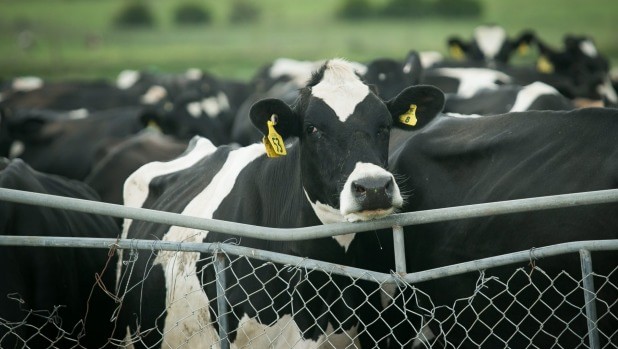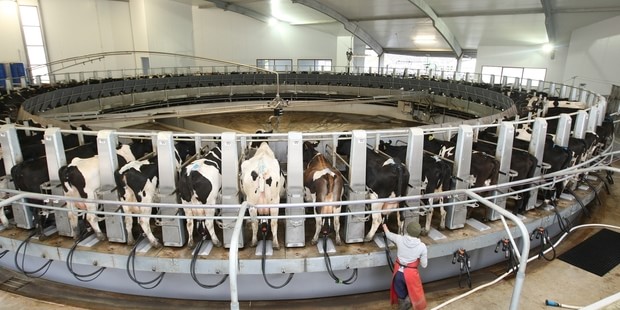
Source: Sunday Star Times
OPINION: The current dairy downturn is inevitably turning attention to the wisdom of having so many eggs in the same basket. When times look rough, it can be helpful to look back and remind ourselves of the journey we have travelled to get where we are.
The driving forces that have led to the present have had very little to do with industry policy. Rather, the outcomes we are now experiencing are the consequence of thousands of individual farmers and rural investors deciding that dairy was where the profits lay. And to a large extent they got it right.
Taxation policy is the one key area where governments have influenced investor behaviour. The longstanding taxation policy of all governments has been to not tax capital gain.
New Zealand is particularly unusual in the developed world in having no capital gains tax on rural land and other investments. Australia, Britain and the the United States all tax capital gain on farm lands.
This absence of capital gains tax is part of the reason that rural land is so expensive in New Zealand. It has made rural land a very desirable investment. However, it has also encouraged farmers to re-invest profits back in the land, build up their assets, and increase their productive capacity.
In essence, there are two parallel businesses on dairy farms. There is the cash business that comes from production. And then there is the capital gain business, which comes from owning the land, undertaking development when the cash allows, and then waiting.
For survival, farmers must first focus on the cash business. In difficult dairy years like right now, it means trimming the sails, eliminating all investment, deferring non-essential maintenance, and keeping a close watch on personal expenditure. Phosphorus fertiliser can commonly be foregone for a year, but nitrogen has to be maintained or production will quickly slip.
Reducing supplementary feeds is a dangerous ploy, as hungry cows always penalise their owner. The key is careful feed budgeting and minimising waste. Farmers now understand these principles much better than even 10 years ago.
In the long run, most farmers who borrow heavily end up profiting from those borrowings. As long as they can survive the down years, then financial leverage ensures high overall returns when the returns are averaged out over the commodity cycle. It is the capital gain that generates the wealth.
DairyNZ publishes an economic survey each year which includes data on both operating returns and capital gain. In the 10 years leading up to and including 2012/13, the return to owner operators, measured as the operating return on dairy assets after deduction of working expenses but before finance charges, ranged from 1.6 per cent to 6.9 per cent. The capital gain on total assets ranged from 15.1 per cent down to -8.2 per cent a year. Total returns to equity capital, ranged from 25 per cent in 2004-05 down to -14.6 per cent in 2008-09.
The overall return on equity capital over the 10-year period was 152 per cent. On a compound basis, the annual increase was 9.7 per cent. Although this does not sound spectacular, the power of compounding means that considerable wealth has been generated. Savings from salary are additional.
The comparable ten-year equity returns to 50/50 sharemilkers, who own the cows but not the land, ranged from 169.3 per cent in 2007-08 down to -62.4 per cent in 2008-09. The average compound return on equity was 25.7 per cent a year but with massive variability and hence also massive risk.
There is no survey data yet for the last 18 months, but we know that 2013-14 was a stellar year with record payouts and considerable capital gain. However, in the current 2014-15 season the gold has turned to dust. The better farmers will weather these tough times and still be there when the sun shines again. The farmers who deserve sympathy are the ones who got their timing wrong and by misfortune are in their first year of ownership. For them it is truly tough. However, many of them will have other farms to cushion the blow.
Much more sympathy should go to first year 50/50 sharemilkers. There will be several hundred of them. Typically, they will be a couple who have worked for five to 10 years in the industry building their asset base. They will then have bought a herd for about $1 million dollars with equity of perhaps $600,000 and borrowings of about $400,000.
They will almost certainly end this current year with a large cash loss, and could easily lose much or all of their equity. These are the young people who are aspiring to be the next generation of dairy farmers. Life is not always fair.
Within the dairy industry, there is still great confidence about the long-term future. But there is increasing concern about how far away those good times might be. Commodity prices cycles are inherently volatile and impossible to predict. If we could predict that volatility, then we could dampen it with counter cyclical behaviours.
* Keith Woodford is honorary professor of agri-food systems at Lincoln University. He combines this with project and consulting work in agri-food systems. His archived writings are available at http://keithwoodford.wordpress.com




